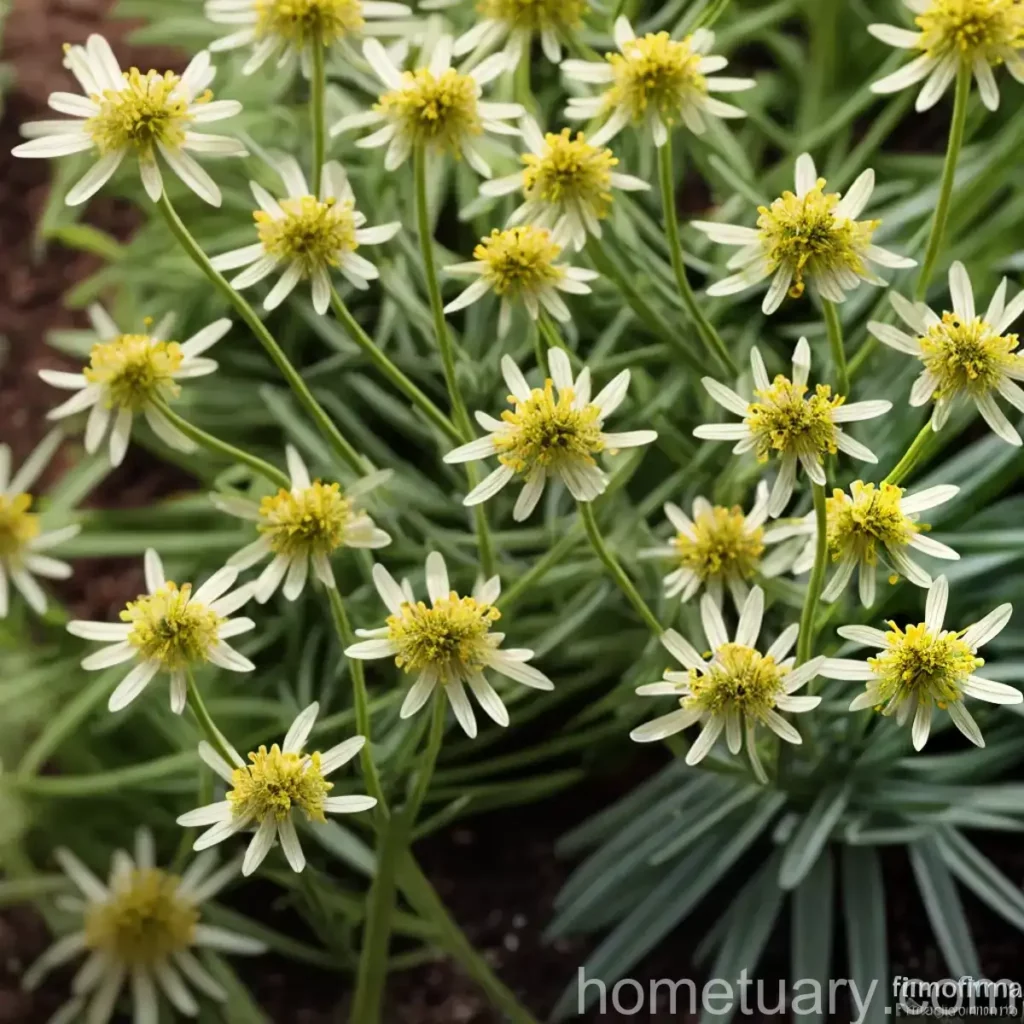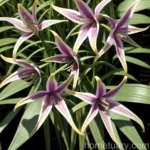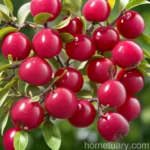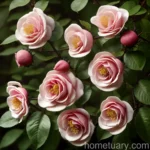Senecio ‘String Of Tears’ (Senecio Citriformis): The Ultimate Plant Care Guide
As a plant scientist, I have always been fascinated by the diversity of plant species and the unique care requirements they have. One particular plant that has caught my attention is the Senecio ‘String of Tears’ (Senecio Citriformis). This trailing succulent plant is not only visually appealing but also relatively low-maintenance, making it an ideal choice for both beginner and experienced gardeners. In this comprehensive guide, I will delve into the various aspects of the Senecio ‘String of Tears’, from its cultural significance and uses to its specific care requirements, common diseases, and propagation techniques. By the end of this guide, you will have a thorough understanding of how to care for this beautiful succulent and cultivate a thriving Senecio ‘String of Tears’ plant in your own home.
What is Senecio ‘String Of Tears’ (Senecio Citriformis)?
The Senecio ‘String of Tears’, botanically known as Senecio Citriformis, is a striking succulent plant characterized by its trailing, teardrop-shaped leaves that closely resemble a string of beads. Native to southern Africa, this plant is a member of the Asteraceae family and belongs to the Senecio genus, which comprises over 1000 species of flowering plants commonly known as “ragworts” and “groundsel.”
The Senecio ‘String of Tears’ is commonly cultivated for its ornamental value, particularly for its unique cascading growth habit, making it an ideal choice for hanging baskets, vertical gardens, and as a trailing accent in mixed container plantings. While its small, pea-like leaves are usually a vibrant green, they may also exhibit subtle shades of gray or blue, adding to the plant’s visual appeal.
This trailing succulent is an excellent choice for indoor cultivation, thriving in a variety of light conditions and requiring minimal maintenance. With its charming aesthetics and adaptability, the Senecio ‘String of Tears’ has gained popularity among plant enthusiasts and interior decorators alike.
Key Takeaways – Senecio ‘String Of Tears’ (Senecio Citriformis)
Before we delve into the specific care requirements for cultivating Senecio ‘String of Tears’, let’s summarize some of the key takeaways:
- Plant Name: Senecio ‘String of Tears’ (Senecio Citriformis)
- Family: Asteraceae
- Genus: Senecio
- Native to: Southern Africa
- Common Uses: Hanging baskets, vertical gardens, groundcover, ornamental accent
- Growth Habit: Trailing succulent with teardrop-shaped leaves
- Popular for: Indoor cultivation, low-maintenance gardening
- Characteristics: Pea-like, trailing leaves with vibrant green, gray, or blue hues
- Propagation: Easily propagated from stem cuttings
- Common Pests: Mealybugs, aphids
- Common Diseases: Root rot (due to overwatering)
With these key points in mind, let’s explore the specific cultural requirements and care guidelines for nurturing a healthy and vibrant Senecio ‘String of Tears’ plant.
Culture
Water
Proper watering is crucial for the health and vitality of Senecio ‘String of Tears’. Being a succulent, it is essential to maintain a well-balanced watering schedule to prevent issues such as root rot and dehydration. Here are some key considerations for watering your Senecio ‘String of Tears’:
- Watering Frequency: Allow the soil to dry out partially between waterings. Water the plant thoroughly and then allow excess water to drain out from the bottom of the pot. Avoid leaving the plant in standing water, as this can lead to root rot.
- Seasonal Adjustments: During the active growing season, typically spring and summer, you may need to water more frequently. In contrast, reduce the watering frequency during the plant’s dormancy in fall and winter.
- Signs of Overwatering: Watch out for signs of overwatering, such as wilting, yellowing leaves, or soft, mushy stems. Adjust your watering schedule accordingly based on the plant’s response.
Sunlight
Senecio ‘String of Tears’ thrives in bright, indirect light conditions, making it an ideal indoor plant that can be placed near a window or in a well-lit room. However, it is essential to protect the plant from direct exposure to intense sunlight, especially during the peak hours of the day, as this can lead to sunburn and leaf damage. Here are some sunlight considerations for optimal plant growth:
- Light Requirements: Provide bright, indirect light for at least 6-8 hours per day. If growing outdoors, consider a location with partial shade, especially in regions with intense sunlight.
- Leaf Coloration: Adequate light exposure is essential for maintaining the vibrant green or blue-gray coloration of the leaves. Insufficient light can cause the plant to appear leggy or pale.
- Indoor Placement: Place the Senecio ‘String of Tears’ near a south- or west-facing window where it can receive bright, filtered light without direct exposure to harsh sun rays.
Fertilizer
While succulent plants are known for their ability to thrive in nutrient-poor conditions, providing a balanced fertilizer during the growing season can promote healthy growth and vibrant foliage. Here are some essential tips for fertilizing your Senecio ‘String of Tears’:
- Fertilizer Type: Choose a balanced, water-soluble fertilizer formulated specifically for succulent plants. Alternatively, a diluted, balanced liquid fertilizer with an N-P-K ratio of 10-10-10 can be suitable for Senecio ‘String of Tears’.
- Application Frequency: Apply fertilizer sparingly during the active growing season, typically once a month. Reduce or cease fertilization during the plant’s dormant period in fall and winter.
- Dilution and Application: Dilute the fertilizer to half or quarter strength to avoid overfeeding. Apply the fertilizer to moist soil to prevent potential root burn.
Soil
The choice of soil directly impacts the overall health and growth of Senecio ‘String of Tears’. Succulent plants, including Senecio Citriformis, require well-draining soil to prevent waterlogging and maintain healthy root systems. Consider the following soil recommendations for cultivating Senecio ‘String of Tears’:
- Soil Composition: Use a well-draining, sandy soil mix specifically formulated for succulent plants. Alternatively, you can create a custom mix by combining regular potting soil with perlite or coarse sand to improve drainage.
- Container Selection: Ensure that the planting container has sufficient drainage holes to allow excess water to escape. A shallow, wide container is suitable for accommodating the trailing growth habit of Senecio ‘String of Tears’.
- Topdressing and Mulching: Consider topdressing the soil with a thin layer of small pebbles or gravel to enhance drainage and prevent soil compaction. Mulching can also help retain moisture and prevent rapid evaporation.
Pruning
Senecio ‘String of Tears’ typically requires minimal pruning, primarily to maintain its desired shape, remove dead or yellowing foliage, and control excessive growth. Here are some key points to keep in mind when pruning your Senecio ‘String of Tears’:
- Deadheading: Regularly remove any spent flowers or withered leaves to encourage continuous growth and flowering.
- Shape Maintenance: Trim back any leggy or excessively long stems to promote a fuller, bushier appearance. The trimmed cuttings can be used for propagation, making this a sustainable practice.
- Sterilization: Use clean, sharp pruning shears or scissors to make precise cuts, reducing the risk of introducing pathogens to the plant. Wipe the tools with alcohol before and after use to minimize the spread of diseases.
Propagation
Propagation of Senecio ‘String of Tears’ is relatively straightforward and can be accomplished through stem cuttings. This method allows you to expand your collection of these charming succulents and share them with fellow plant enthusiasts. Here are some steps for successful propagation:
- Selecting Cuttings: Choose healthy, non-flowering stems and carefully cut them into several 3-4 inch sections, ensuring that each cutting has at least a few leaves and nodes.
- Callusing: Place the stem cuttings in a shaded, dry location for a few days to allow the cut ends to callus or form a protective layer, reducing the risk of rotting when planted.
- Planting: Once callused, plant the cuttings in well-draining soil or a propagation mix, and lightly mist the soil to provide moisture without saturating the cuttings.
- Root Development: Keep the cuttings in a warm, bright location with indirect light, ensuring that the soil remains lightly moist. Within a few weeks, the cuttings should develop roots and show signs of new growth.
Propagation allows you to create new plants from existing ones, ensuring the continued vitality and sustainability of the Senecio ‘String of Tears’.
Container Popularity
The Senecio ‘String of Tears’ has gained immense popularity as a container plant, particularly for its cascading growth habit and ornamental value. Whether displayed in hanging baskets, trailing over the edges of pots, or incorporated into vertical gardens, this succulent adds charm and visual interest to any indoor or outdoor setting. With its adaptability to various container types and minimal care requirements, the Senecio ‘String of Tears’ is an ideal choice for both novice and seasoned gardeners looking to enhance their living spaces with a touch of natural beauty.
Container Common Diseases
While container cultivation offers numerous benefits, it is important to be aware of potential diseases that can affect the Senecio ‘String of Tears’ when grown in pots. Here are some common container diseases and tips for diagnosis:
Disease Diagnosis
- Root Rot: Overwatering or poorly-draining soil can lead to root rot in container-grown Senecio ‘String of Tears’. Symptoms include wilting, yellowing, and mushy, discolored stems. To diagnose root rot, carefully inspect the root system for dark, mushy roots and a foul odor, indicating fungal infection.
Disease Control and Prevention
- Water Management: Adjust the watering schedule to allow the soil to dry out between waterings, preventing excessive moisture accumulation. Ensure that the container has adequate drainage to allow excess water to escape.
- Soil Inspection: Regularly inspect the soil for signs of compaction and waterlogging. Consider repotting the Senecio ‘String of Tears’ in fresh, well-draining soil if disease symptoms persist.
Common Pests
Despite being a relatively low-maintenance plant, Senecio ‘String of Tears’ is susceptible to certain pests that can compromise its health and appearance. Common pests that may affect this trailing succulent include mealybugs and aphids.
Pest Control
- Mealybugs: Identify mealybugs as white, cottony pests that tend to cluster on the undersides of leaves or along stems. Use a solution of water and mild liquid soap to gently remove the pests from the plant. Alternatively, insecticidal soaps or neem oil can be effective for controlling mealybug infestations.
- Aphids: Aphids may appear as tiny, soft-bodied insects that cluster on new growth, sucking sap from the plant. Rinse the affected plant with a strong stream of water to dislodge the aphids. In cases of severe infestation, consider using insecticidal soap as a targeted treatment.
Maintaining regular inspection and hygiene practices can help prevent pest infestations and preserve the overall health of Senecio ‘String of Tears’.
Botanist’s Tips
As a plant scientist, I have gathered some valuable insights and expert tips for successfully growing and caring for Senecio ‘String of Tears’:
- Growth Habit: Embrace the cascading growth habit of Senecio ‘String of Tears’ by allowing it to trail over containers, shelves, or hanging baskets, creating a visually striking display.
- Temperature Tolerance: Senecio ‘String of Tears’ thrives in moderate room temperatures ranging from 60-75°F (15-24°C). Protect the plant from extreme temperature fluctuations, particularly cold drafts and heat sources.
- Moisture Management: Prioritize well-draining soil and a balanced watering schedule to prevent issues related to overwatering, which can be detrimental to succulent plants.
- Regular Inspection: Routinely inspect your Senecio ‘String of Tears’ for signs of pest infestations, disease symptoms, or nutrient deficiencies, addressing any issues promptly to maintain plant health.
Implementing these botanical tips can contribute to the overall success and longevity of your Senecio ‘String of Tears’ plant.
Fun Facts
To enhance your appreciation for Senecio ‘String of Tears’, here are some fun and intriguing facts about this charming succulent:
- Native Origins: Senecio Citriformis is native to regions of southern Africa, where it thrives in arid, semi-desert environments, making it well-adapted to dry conditions.
- Medicinal Uses: In some traditional medicine practices, extracts from certain Senecio species are used to treat various ailments, although caution is advised due to the potential toxicity of certain compounds present in the plants.
- Botanical Relatives: The Senecio genus is incredibly diverse and includes a broad range of species, from small, low-growing groundcovers to large, bushy shrubs, and even towering, treelike specimens.
By exploring these fun facts, you can gain a deeper understanding of the natural history and cultural significance of Senecio ‘String of Tears’.
Links to External Resources
For additional information and in-depth resources on Senecio ‘String of Tears’ and related topics, consider exploring the following links:
- Senecio ‘String of Tears’ – Cultivation Tips and Care Guidelines
- Trailing Succulents: Ideal Plants for Hanging Baskets
- Succulent Plant Propagation Techniques
- Container Gardening Resources and Inspiration
These external resources can further enrich your knowledge and provide valuable insights into cultivating and caring for Senecio ‘String of Tears’.
In conclusion, Senecio ‘String of Tears’ (Senecio Citriformis) is a captivating succulent plant with a range of cultivation tips and care guidelines that cater to its specific needs and growth habits. Whether displayed in containers indoors or incorporated into outdoor landscapes, this trailing succulent adds a delightful touch of natural beauty and aesthetic appeal. By understanding the cultural significance, care requirements, and unique characteristics of the Senecio ‘String of Tears’, you can cultivate and enjoy the splendor of this charming succulent in your own home.
Remember to prioritize regular observation and attentive care, as this will ensure the ongoing health and vitality of your Senecio ‘String of Tears’. With the right cultural practices and a touch of botanical enthusiasm, you can create an enchanting display of Senecio ‘String of Tears’ and enhance your connection with the natural world.
As a plant scientist, I thoroughly enjoyed exploring the cultural and care aspects of Senecio ‘String of Tears’ and creating this comprehensive guide. If you would like to explore any specific topics or seek further assistance, do not hesitate to reach out for more botanical insights and plant-related advice. Happy gardening and happy exploring the world of succulents and botanical wonders!















